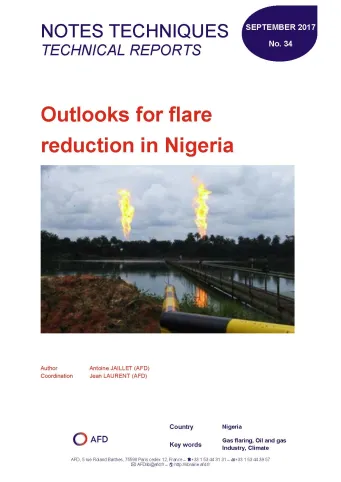Share the page
Outlooks for flare reduction in Nigeria
Published on

In 2015, 350 trillions of cubic feet (tnscf) of gas were flared in Nigeria, amounting to 12% of the overall gas production for an estimated economic loss of more than US$1 bn of gas. Beyond the economic waste, gas flaring has a significant climate impact with more than 48 Mt of CO2 emitted in 2010 i.e. more than 15% of Nigeria’s greenhouse gas emissions and impacts negatively health and crop productivity of local communities. The practice of flaring (i.e. combustion of gas associated with oil production) is not new in Nigeria and has been plaguing the oil industry since the beginning of production in the 1950s’. Although some progress has been achieved since then, significant efforts remain to be undertaken to reach the objective of the Nigerian government to end gas flaring by 2030 as per its INDC (Intended Nationally Determined Contribution) pledged during the COP21. In spite of significant issues obstructing the development of a gas market and infrastructures necessary to enable commercialization of associated gas (such as the regulatory structure, the lack of end markets and the weak financial health of local oil players), there is positive outlook for flare reduction in Nigeria. Indeed, the renewed commitment of the Nigerian government expressed at the Paris Conference gives hope that positive change should occur, namely in the form of a new legislative framework for the oil and gas industry, which could translate into more favourable terms for gas production and a stronger regulation. Furthermore, the Ministry of Petroleum Resources launched in December 2016 the National Gas Flare Commercialization Programme, aiming at fostering investment in gas flaring reduction projects for the private sector and unlocking stranded gas by fostering the deployment of new flaring capture processes in Nigeria.
In this context, there is opportunity for AFD Group (but also others donors) to support initiatives for flaring reduction by mobilizing financial resources in support of the private sector. Instruments mobilized could take the form of green climate finance, direct concessional or commercial loans or lines of credit for the banking sector.
Useful Information
-
Authors
-
Antoine JAILLET
-
Coordinators
-
Jean LAURENT
-
Edition
-
34
-
Number of pages
-
65
-
ISSN
-
2492-2838
-
Collection
-
Technical Reports
